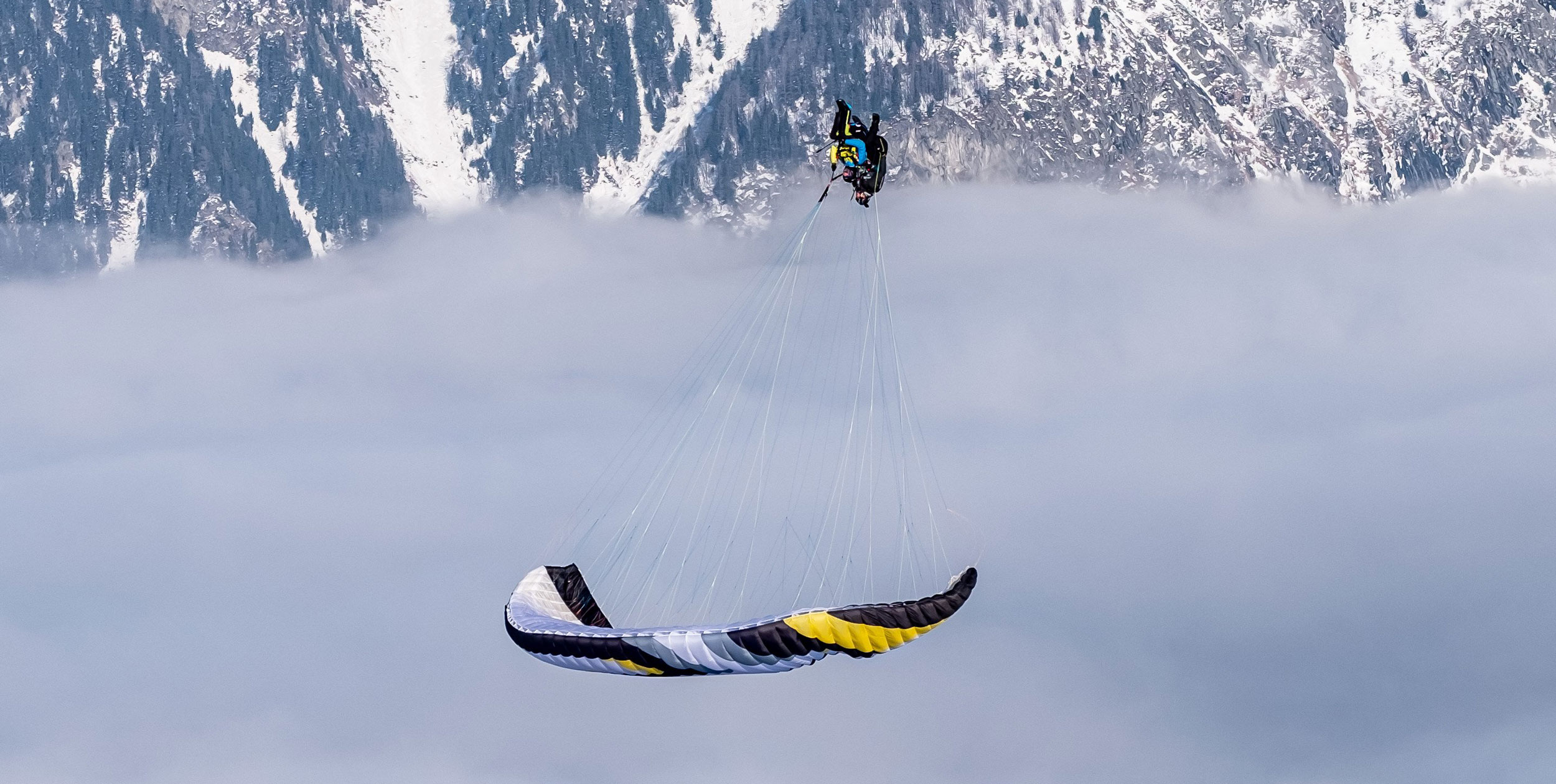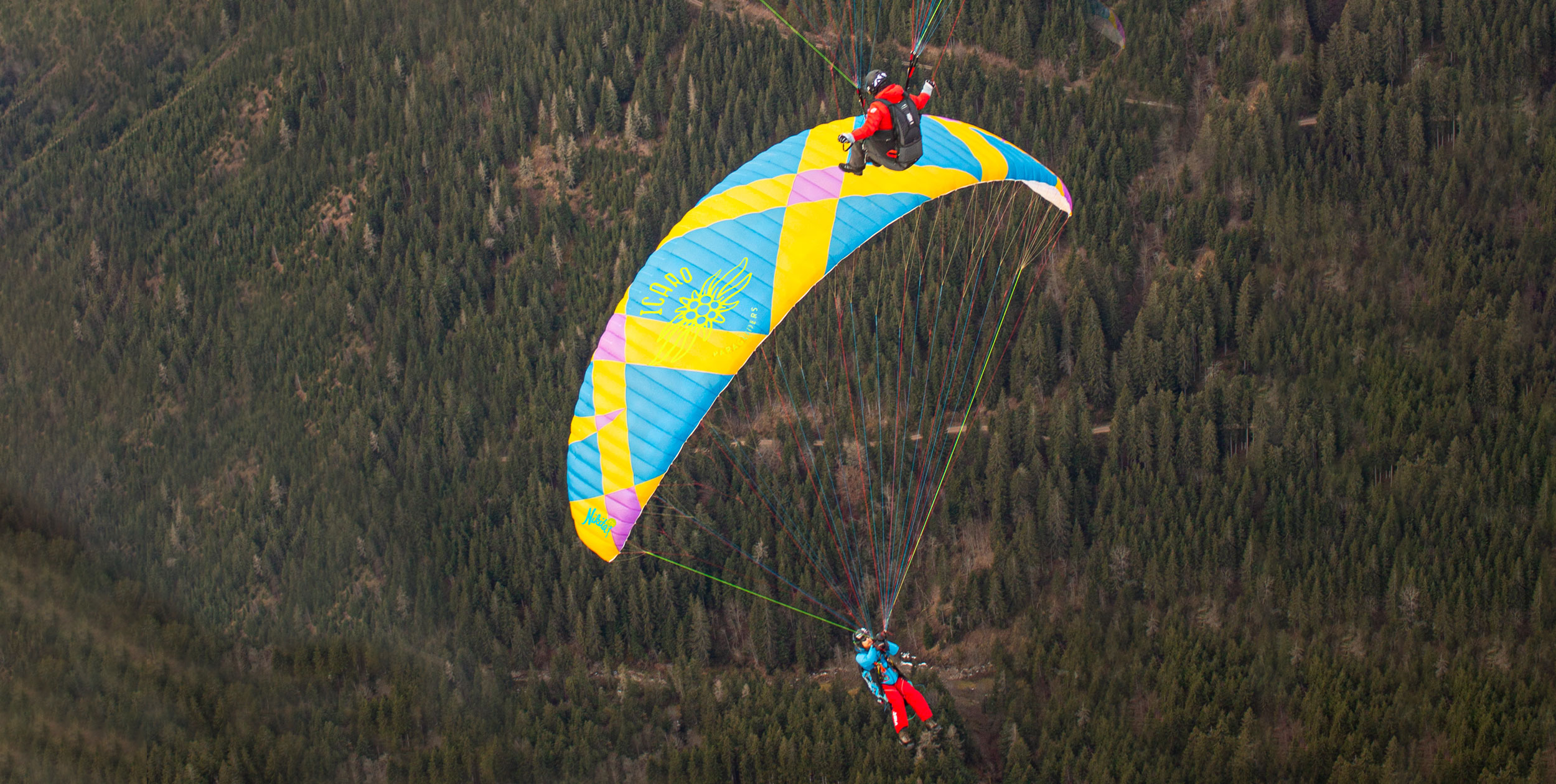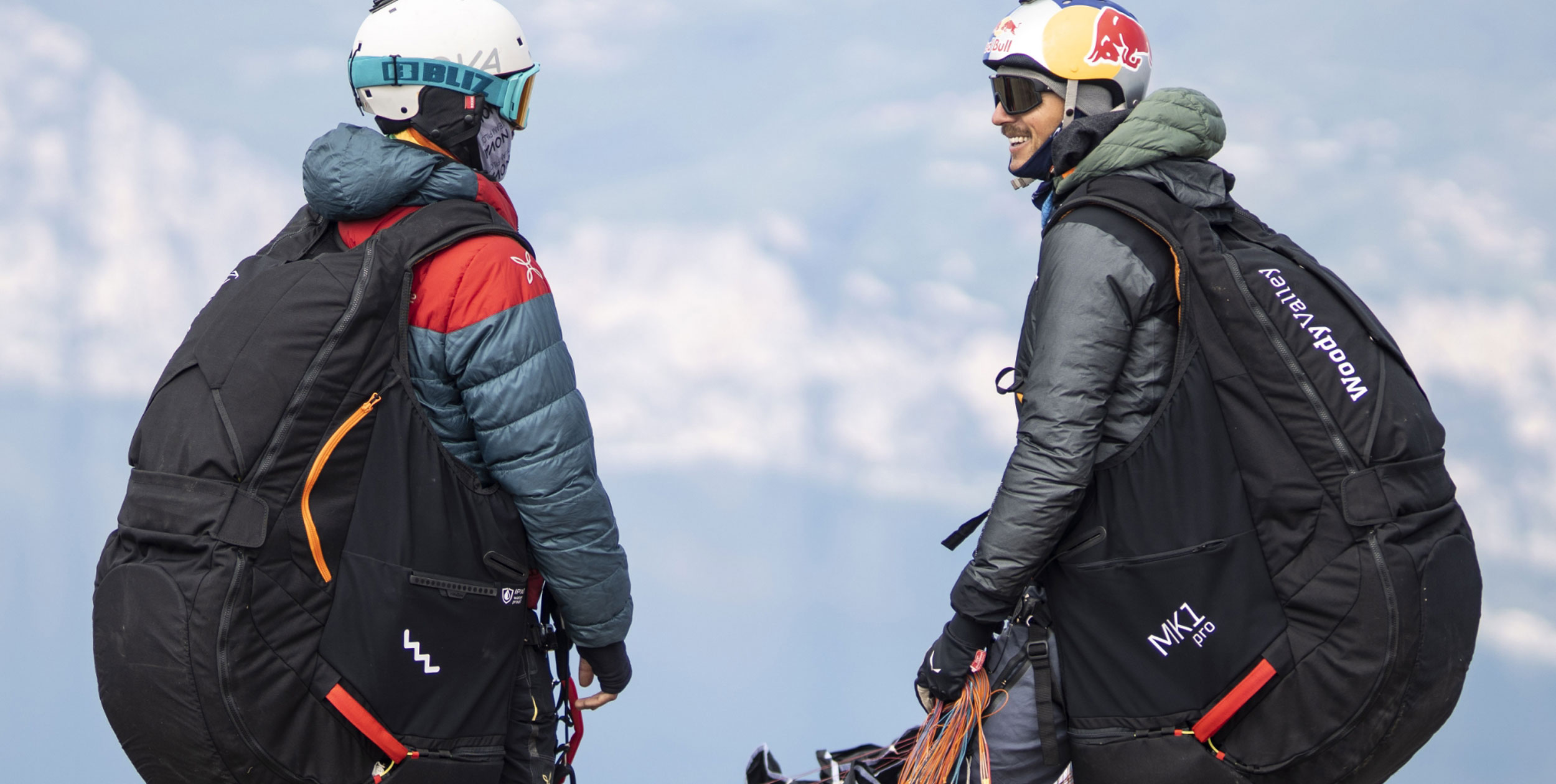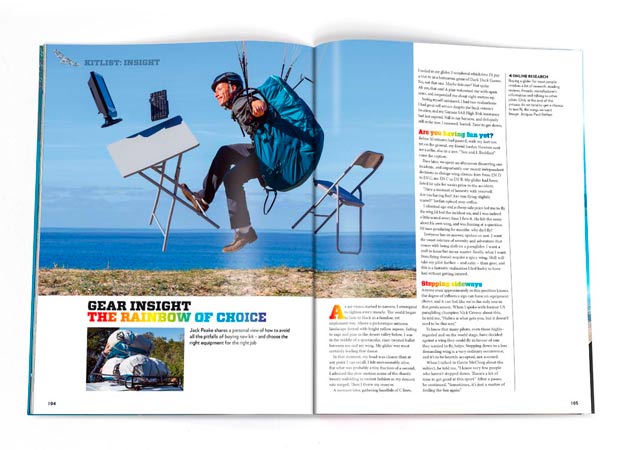US pilots Will Gadd and Chris Santacroce D-Bag from a microlight in Australia for a TV adventure show
This 2001 interview with Eric Viret and Christophe Waller reveals how D-Bagging, the method of jumping from a tandem paraglider or a helicopter, evolved
At recent events across the globe, spectators have been amazed by the spectacle of tandem passengers dropping from between the pilots’ legs and then deploying their own gliders. ‘Paraglider Jumping’, for want of a better title for this new technique, was first seen at the Villeneuve acro event, then at St Hilaire and the Fun Fusion competition. Manu Bonte talks to Switzerland’s Eric Viret and Christophe Waller, professional test pilots for Falhawk, who have a total of 150 successful jumps between them.
Where did the idea of paraglider jumping come from?
Eric Viret: Dropping hang gliders and Swifts from balloons has always been the star attraction of aerobatic shows. First, the action is happening in the sky in full view of all the spectators. The glider is released and goes into free fall, before pulling out and going into several radical manouevres. The public are always open mouthed. We were interested to see if we could develop a technique enabling tidy jumps from a tandem paraglider. All the more as with a paraglider its even more spectacular: the wing only appears when it opens and you can jump extremely low.
Howcan you be certain that the canopy would open correctly when it comes out of a bag?
Eric Viret: The idea probably comes from observing a stalled paraglider – some models horseshoe neatly and reopen very well. We tried to pack the glider in the nearest possible configuration to the horseshoe with perfect symmetry. My first bag for jumping its called a pod in parachuting was in fact very cumbersome. Then I reduced the bag size to be able to jump from a Swift. I even jumped from a Hercules. As it turns out the small bag is fine and I use it now for all my jumps.
What! You jumped from a plane in flight?
Eric Viret: Yes. The difficult bit is setting it up so that everything happens in total security for both the plane and me. Obviously it’s a bit violent on opening, but until now it has always been fine. Anyhow, once dangling under the plane I wasn’t exactly going to hang around till the plane had to land!
So what does this pod look like?
Eric Viret: It’s a cross between a reserve parachute pod and that of a jump chute. I stole the idea of a cover that protects the wing and the elastic bands keeping the lines stowed ready to deploy from parachutists. But in fact, it’s all down to packing technique: you have to be extremely meticulous and perfectly symmetrical. Now, with experience we can make the glider open extremely quickly or more slowly
as required!
And how are you attached under the carrying aircraft?
Christophe Waller: The pod is attached, open end down, to the aircraft with a carabiner. The pilot is attached to the aircraft with two capewell-type carabiners. You need two of them to prevent the pilot from spinning in relation to the pod
However you have to release perfectly symmetrically. The least asymmetry and youre in trouble.
What are the risks?
Christophe Waller: If it isn’t packed perfectly, if the hands aren’t positioned perfectly symmetrically when the glider opens, or if the actual jump isn’t symmetrical, the wing is very likely to open asymmetrically, even cravatted. It can lead to a big asymmetric tuck followed by a spiral. But it can also enter a violent flat spin and twist up the lines.
And in such cases, do you go for your reserve straightaway?
It depends on your bottle. I can remember a jump that went wrong and turned my wing into a bag of washing. I was very low so I grabbed for my reserve handle. But its very rare. In general you give yourself plenty of time to react. You see, if the wing spins and the lines twist, I pull the brake attached to the riser in front of my eyes, and I spin in the other direction until it untangles!
Ah yes, of course, I get the picture!
Christophe Waller: And then if you get a big cravat you can try a full stall to put everything back in order. Sometimes, stalling straightaway isn’t so efficient, so I let it spin for a few turns. In this case, well centrifuged, it works fine.
This flying certainly seems a bit different!
Eric Viret: We put ourselves into extreme situations. When everything goes well you could put a monkey under the glider
but when it goes wrong you have to react quickly and correctly. The minimum is to master stalls and spins.
Christophe Waller: One of my friends, a very good pilot and instructor since 1993 was dreaming of doing solo jumps. So he trained for 3 months. Stalls, spins
Oh really
and did it go well?
Christophe Waller: Yes, he managed to land on his feet without throwing his reserve. Its funny; it all went horribly wrong the first time for me too. He doesnt want to do it again!
And now the tricky question: how well does the gear stand up to the abuse?
Eric Viret: I give it a thorough visual inspection at every repack. I especially look at the connection points of the lines: if the stitching have suffered it is most likely that the line is tired. You have to do regular line break tests. On top of that, if a line rubs against another, they melt
. As for the wings, I hardly dare think about it!
There are things that I can hardly explain to myself: There are some wings which suffer line breaks in normal flight, yet we have wings with 600 hours going from jumps to barrel rolls without any problems. Beyond the adrenaline aspect, glider jumping and aerobatics are for me a wonderful test bench for the wings. My Aspire wing has more than 20 normal jumps plus 3 quick ones (Swift and Hercules 90Km/h) without mentioning the 100 hours of aerobatics and the lines are the originals But its a young sport and we check our wings meticulously.
What is the minimum altitude you can jump from?
Eric Viret: With todays technique you can jump safely from 80m.
Christophe Waller: Yes, a big problem at 80 m is ok
but only with freshly repacked reserve and underpants.
This article was updated on 13/1/2011
• Got news? Send it to us at news@xccontent.local
Subscribe to the world’s favourite hang gliding and paragliding magazine







